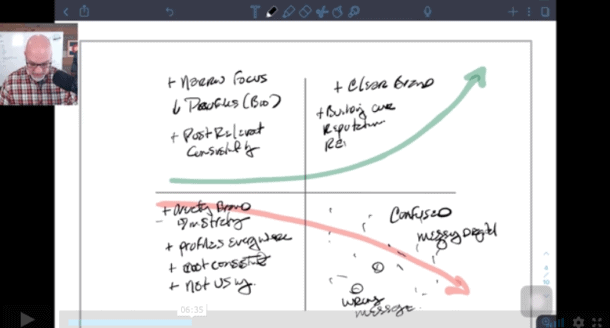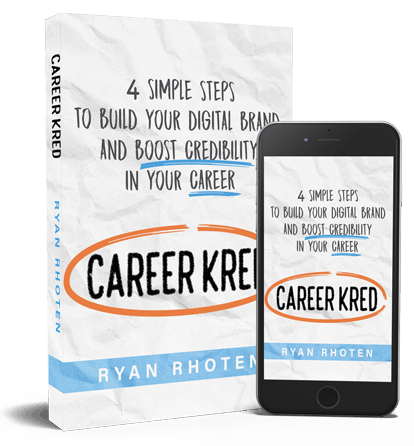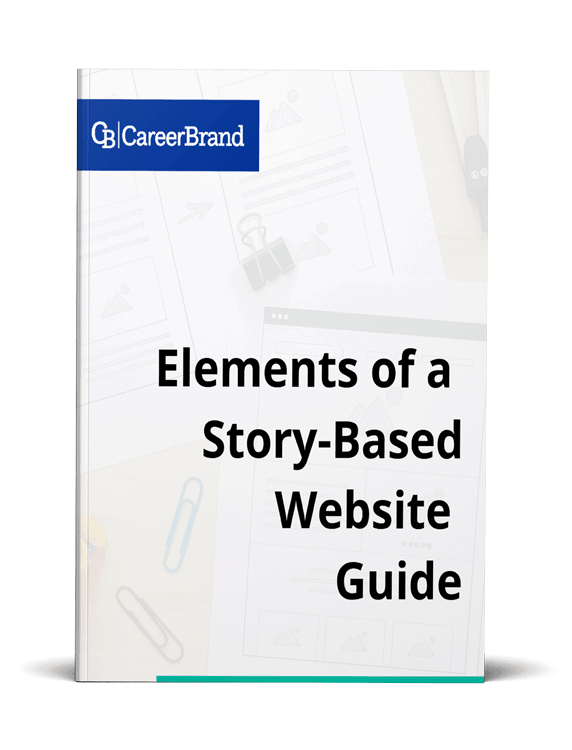“My process is unique.”
“My process is different every time because my clients are different.”
Have you ever heard this before? Have you ever said this before? Be honest.
I hear this or a variation of this, nearly every time I speak with a coach about their process, career coaches and recruiters especially. And yes, recruiters are coaches. The good ones anyway. It's natural to think your coaching process is unique. And frankly, it may very well be when comparing your process to the processes of other coaches. But when it comes to the application of your process, the truth is, it isn't as unique as you think.
In fact, if you really take the time to analyze your process, unpack it so to speak, you'll find you go through the same steps with your clients, each and every time. Borrowing words from the founder of The Men's Warehouse, I guarantee it. Since the Gallup Strengths conference in July, I have had the pleasure to work with several career coaches. They all face three common challenges.
Challenge One
As I alluded to at the beginning, coaches believe their process changes with every client. While I agree, the advice you give each client might be different, the process you use from client to client, isn't.
Challenge Two
When I asked them to explain their process, most coaches struggled to articulate it. Let me rephrase. They struggled to explain their process in a simple and concise manner. At some point, nearly all of them stopped to ask me if they were confusing me. Yes. Yes, they were.
Challenge Three
Many coaches struggle to understand how to scale their business. They get into coaching for all the right reasons. They want to help others achieve their goals. Unfortunately, or fortunately, depending on your perspective, it only takes a few coaching sessions before you start to ask the bigger business question. How do you build a business, when you are the business?
Enter the D.I.C.E. Process
If you have experienced or are experiencing any of these challenges, I have good news for you. All three of these challenges can be conquered by unpacking your coaching process. Once you can see your process visually, it becomes easier to answer questions like, “how do I scale my business” or “how can I succinctly explain to others what I do?”
Would you believe that with your process defined, what you really have is the makings of an online or an email course that you can sell to clients literally in your sleep? How cool would that be? Helping your clients and scaling your business even while you are asleep. A defined process can help do this for you. In addition, your process can be used for themed content creation, lead magnets, eBooks, a branding strategy, a marketable coaching method and it can even be turned into a certification program enabling you to train future coaches on your process. Of course, none of this can happen if you can't “see” your process.
Understanding this, I wanted to walk you through how your coaching business can benefit from following a well-defined, four-step process like the D.I.C.E. process.
The Define Step
If you're unfamiliar with the D.I.C.E. process, the Define step is all about defining your process. Without defining your process, it is natural for you to think of your process as complex with lots of moving parts. You think this way because your process is in your head, not documented on paper. That's why when working with coaches the first thing we do is walk through their entire process, step-by-step. We unpack everything, usually in about an hour.
I've found, without fail, that all processes break down into 3 to 4 simple, high-level steps. And this is where the magic begins. Once you can see your process as higher-level steps, it almost automatically becomes easier for you to explain, and better yet, easier for your potential clients to understand.
In this age of complexity, we find ourselves living in, there is one thing that is undeniable. We will always be drawn to simplicity. Simplicity in-process and simplicity in marketing. One of the greatest marketing campaigns ever made (my opinion of course) was broken down into two words, Think Differently. In the spirit of that campaign, think about how much better it would be for you if you had a simple three-step process to explain to your prospective client when they ask, “what's involved in your process?” You may find it hard to believe right now, but your process can be explained in 3 steps.
Action: Write down your process step-by-step. Define your 3 or 4 step process.
The Integrate Step
The Integrate step is all about getting your digital brand in order, specifically your website and associated branding. I could put up a multitude of examples of bad coaching websites but instead, here's a hint of what to look for, words. Lots and lots of words. Oh, and scrollers. Rather than describe here why these things are bad in general as well as bad for your business, I would like to ask you to push the “pause button” on this article at this point and take a few minutes to read my post titled, The Top Website Mistakes Politicians Make.
When someone visits your website, he or she wants to know two things.
- Do you understand my problem?
- How do you help solve my problem?
That's it. Two questions. If you can answer these questions quickly and succinctly, your chances of converting a browser into a potential buyer increases dramatically. Spelling out your process in three simple steps helps answer both of these questions. Another thing that helps is the overall structure of your homepage. Instead of scrollers and lots of words to explain what you do, use a background image that subconsciously tells potential clients what you do. For example, use a background image of you coaching a client.
Another critical item on your home page is being able to tell your client in one sentence how you help. That's right, one sentence. Ever tried to do that? It's not easy but it's worth the time to figure out your sentence. It becomes easier to figure out when you can see your process. Take a quick look at the cover image for this post. You'll not see examples of processes visually displayed, but you'll also find one sentence. That sentence explains this entire post.
I talk about it in detail in the linked post, but unfortunately, many coaches and even more recruiters I've spoken with underestimate the value in collecting email addresses. Every website needs a call-to-action specifically designed to collect email addresses. Why? Because, once you have a potential client's email address, you can begin nurturing them along a defined path. Preferably one that aligns with your process. And speaking of your process put it front and center on your homepage. Potential clients will be drawn to its simplicity. It will help them quickly recognize how you help them and the value they will receive.
Action: Read the post on the Top Website Mistakes Politicians Make and conduct an honest review of your own site. Are you making the same mistakes?
The Create Step
The Create step in D.I.C.E. is all about creating useful and relevant content. As I alluded to earlier, once you know your process you can create content around it. I think you'd agree, the key ingredient needed for someone to hire you as a coach is trust. Content helps you build trust. It helps potential clients understand the depth and breadth of your experiences as well as enables them to get a feel for what it would be like to work with you. Yes, content is that important.
To help you build trust, your content should be centered around your process. If you have three steps in your process for example, what you really have are three themes around which all of your content should be created. You use your themes to create blog posts, Instagram images, LinkedIn articles, eBooks, checklists, pdfs, giveaways, etc. As an example, I use a simple four-step process I call D.I.C.E. This means I have four potential themes I can use to create content that will help educate my audience, Define, Integrate, Create, and Engage.
In addition, I can also use the entire process to assess branding and marketing methods. Like I've been doing in this post. When it comes to creating content, don't underestimate its power for building trust with your audience. Content-centered around your process, provides the social proof potential clients look for when they are deciding whether or not to buy from you. It's been said potential buyers need to consume upwards of ten pieces of your content before they become comfortable enough to become a customer. Image how they'd feel if all ten pieces were related to your process?
Action: Write down the themes that align with your defined process. Does your current content align with those themes?
The Engage Step
In the Engage step, you engage or interact with your audience. Ways you can engage include participating in Twitter Chats, attending conferences, social media, live streaming video, etc.. If you capture email addresses because you've integrated your brand well online, you have the opportunity to speak to your audience directly from their inbox where you can provide them with real value on a consistent basis. And of course, throw in the occasional pitch.
Webinars are another great way for you to engage with your audience. You can use the opportunity to walk them through your process, step-by-step. Once in the webinar, you can provide examples of clients who have gone through your process and what they discovered along the way. I could go on and on here as there are a number of ways you can engage with your audience, but the reality is you may not see any of these opportunities or at least not as many if you can't see your process.
Action: If you're not already, set up a method to capture email addresses on your site. I use a company called ConvertKit but there are many more to choose from, believe me, I've tried them all…I think.
If you do have an email collection set up, consider whether or not your giveaway (lead magnet) aligns with your process? You do have a lead magnet, right?
Sum
Like yourself, I want to help and serve as many people as I can. My process, like yours with your clients, holds the key to making that a reality. Do yourself a favor this coming week. Take time to really unpack the process you use with your clients. Walkthrough it and write it down, step by step. Once you've got it, start using it to create your content, build a branding strategy and turn it into a marketable coaching method. Once you do, you can use it to impact your client's lives and your bottom line. If you would like to know whether or not your process might need to be unpacked, send me a message, and let's set up a time to talk.





